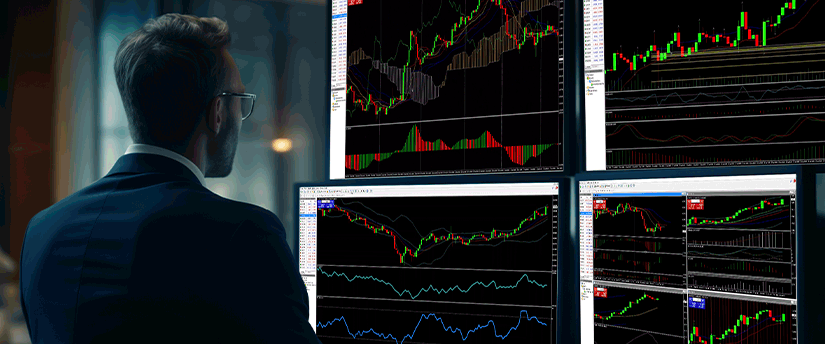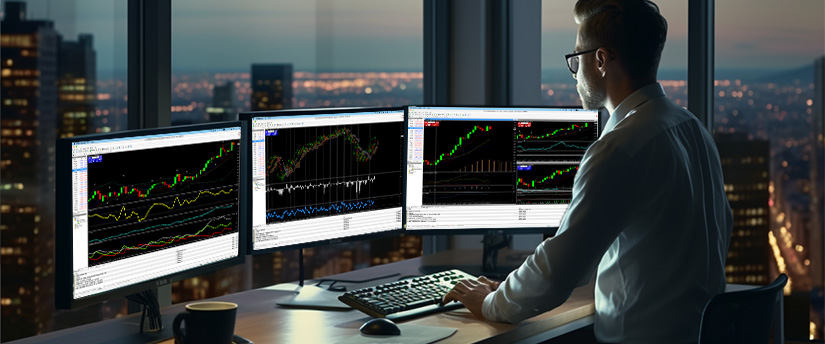In the world of finance, CFDs, or Contracts for Difference, are agreements which traders use to speculate on the asset’s price movement.
They do not own the underlying asset. CFDs are leveraged products, meaning that you can control a larger position with a small initial deposit and better risk management. Profits can be generated if the market moves in a favorable direction, making CFD trading a really good option.
However, it is important to keep in mind that leverage may increase losses too, just as quickly as profits. So, although many traders choose CFD trading, it carries risks such as unexpected volatility and excessive leverage, which can increase losses.
To trade effectively over a long period of time, it’s about how big your profits are compared to your losses and not how often you profit.
Every trade carries the risk of loss. Even experienced and professional traders lose sometimes. A streak of winning trades can still result in an overall loss if risk isn’t managed properly.
As a result, having proper risk management in place is of great importance since you can control how much risk you are comfortable with, understand how much you can afford to lose on each trade as well as take the necessary steps to hedge against important market events.

5 risks of CFD trading
Market risk
With CFDs you can speculate on whether the price of an asset will increase or not. If you believe it will go up, you go long but if you believe it will go down, you go short. However, even experienced traders can go wrong.
Unexpected events, news or changes in policy may lead to the market suddenly moving. Since CFDs are sensitive to small changes in the market, a small move that goes against your trade may lead to losses. In such a case, you may need to pay additional funds known as a margin call or your provider might even close your trade if it results in a loss.
Liquidity & gapping
There are times when there aren’t enough buyers and sellers in the market making it difficult to close a trade at a good price. This could lead to additional losses. In markets that move fast, prices can also jump unexpectedly.
This is also known as gapping. Therefore, if the market doesn’t fill your trade at the expected price, you may lose more money than you anticipated.
Leverage & volatility
You can trade CFDs with leverage, which means you can use a greater amount of money to open a larger position.
Depending on whether the market moves in your favor or against you, this could result in higher profits and losses.
Markets can also move sharply and without warning, leading to sudden changes in prices caused by political events, natural disasters or major news.
Like leverage, volatility can create trading opportunities, but it can also increase the risk of quick losses.

How to manage CFD trading risk wisely
Use margin appropriately
When opening a CFD trade, use only a small portion of the funds you have as margin. Try not to put all your capital in one position but rather try to keep extra funds in your trading account to make up for any losses while your position is still open.
Use stop-loss orders
A stop-loss order will help you minimize losses since you are choosing a price level at which your trade should close automatically if the market moves in the opposite direction.
This can help in hedging against bigger losses. You can use a stop-loss either when placing a trade or afterwards. Trailing stop losses are also offered by some brokers. These move with the market and secure profits.
Use CFD trading for hedging purposes
CFDs allow you to trade on prices that are dropping. Therefore, you may use them to protect your positions. For instance, if you anticipate a short-term fall in value but you have a long-term portfolio, you may open a short CFD position.
If the market goes down, your profits from your CFD trade may help cover your portfolio losses. This is like having an insurance for your trades.
Stick to your trading plan
Emotions may negatively impact your trading like holding onto losses longer than you should. That’s why it’s important to have a solid trading plan in place with clear rules. Enter or exit a trade based on your plan, instead of your emotions like fear or greed.
Be familiar with Risk vs Reward
Skilled traders constantly weigh the possible gains against potential risks. This is referred to as risk/reward ratio.
Aim to choose trades where the potential profit is greater than the potential loss.
Use a diversified portfolio
As already discussed, try not to put all your money into one instrument or trade in general. Spread your funds across various asset types, including forex, commodities, stocks, indices and more. This can lower overall risk without lowering possible returns.
Keep losses small
Even the best traders experience losses sometimes, so the key to minimize those losses is never to risk more than 1% of your total capital on one trade. This way, a string of losing trades won’t harm your trading account.

Final thoughts
Losses are a normal part of trading, whether you’re a beginner or a professional. Understanding and managing risk is essential for long-term success.
In CFD trading, where leverage magnifies both profits and losses, risk management becomes especially important. Using tools like stop-loss orders can help limit losses if the market moves against you.
Traders should also develop a solid trading strategy, build confidence through practice, and avoid risking too much on a single trade. Many brokers offer useful tools like economic calendars, educational resources, and built-in risk features to support smart trading decisions.
These tools won’t eliminate risk entirely, but they can reduce exposure to large losses while helping you stay in control.
By managing risk effectively, traders can protect their capital, extend their trading lifespan, and maintain the opportunity to generate consistent returns over time. Risk management is not just a safety net, it’s a vital part of any successful trading plan.
If you want to deepen your trading knowledge and strengthen your risk management, explore the IronFX Academy for free educational courses, expert insights and practical tools designed to help you trade smarter and with more confidence.
Disclaimer:
This information is not considered investment advice or an investment recommendation, but instead a marketing communication.
















